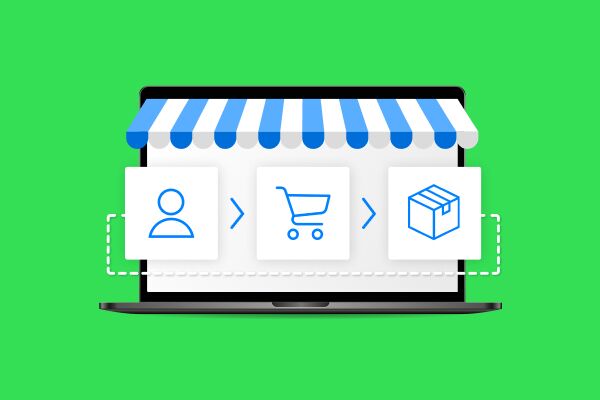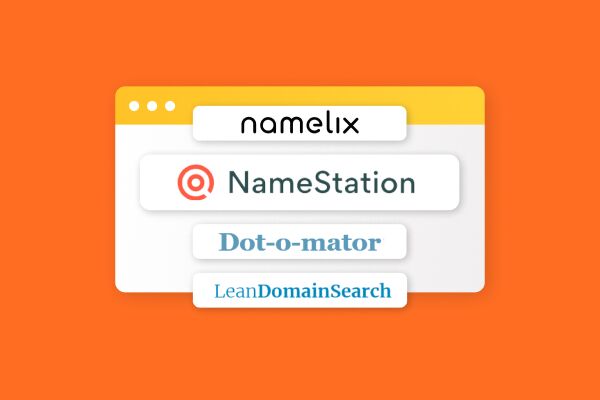When you actively promote your online shop via advertising channels, it is essential to understand their effectiveness to avoid wasting resources. Google Analytics and other analytics services provide some data on traffic, but it is not always possible to objectively evaluate the usefulness of promotion channels. UTM tags are designed to help with that. This article will explain what UTM tags are, why they are needed and how to use them.
When you actively promote your online shop via advertising channels, it is essential to understand their effectiveness to avoid wasting resources. Google Analytics and other analytics services provide some data on traffic, but it is not always possible to objectively evaluate the usefulness of promotion channels. UTM tags are designed to help with that.
This article will explain what UTM tags are, why they are needed and how to use them.Urchin Tracking Module
A UTM tag is a parameter that is inserted into a website URL to track information about link clicks. You can place such an address on any outdoor platform where advertising leads to the online shop's website, for example, in a mailing list. UTM tags will tell you that the user came to you through email marketing and will show which email he did it through.
Varieties of UTM tags
There are five universal UTM tags that most external sites understand:
-
utm_source - defines the source through which there was a click to the website;
-
utm_medium - defines the type of traffic, for example, transition after a click on a banner;
-
utm_campaign - defines the name of the advertising campaign;
-
utm_term - defines the keywords that led to the display of the ad;
-
utm_content - an additional identifier that helps determine the traffic source if the other parameters are the same.
Example URL with UTM tags: https://site.com/?utm_source=youtube&utm_medium=post&utm_campaign=webinar_14march
You can set the parameter values arbitrarily, but it is better to use common names so that outsiders can understand the reports of your advertising campaign. It is especially true for utm_source and utm_medium. For example, utm_source=YouTube means that the site has switched from the platform of the same name, and utm_medium=cpc is used to refer to contextual advertising to determine cost-per-click.
Dynamic UTM tags
Besides simple values, you can also define dynamic variables for UTM tags. The system will then automatically substitute the correct values when you click on the link. By doing this, you can collect even more valuable information, such as the device from which the link was passed. Dynamic variables are not standardized - they have different names at each site and perform specific functions. Therefore, before applying them, it is best to read the instructions for use on a particular platform, such as Facebook.
Where to use UTM tags
Ideally, any link you place to your online shop's website on an external resource will need UTM tags. It will allow you to collect complete information about your traffic. But it is especially vital to use UTM tags for your advertising campaigns.
-
Contextual advertising. With UTM tags, you will understand which queries are driving traffic to your website, which will cut down expenses on irrelevant requests. In addition, you will be able to evaluate the conversion rate and understand how efficient this promotion channel is.

-
Social media advertising. Place links with UTM tags in your ads, find out which works best, and gather additional information about your target audience.
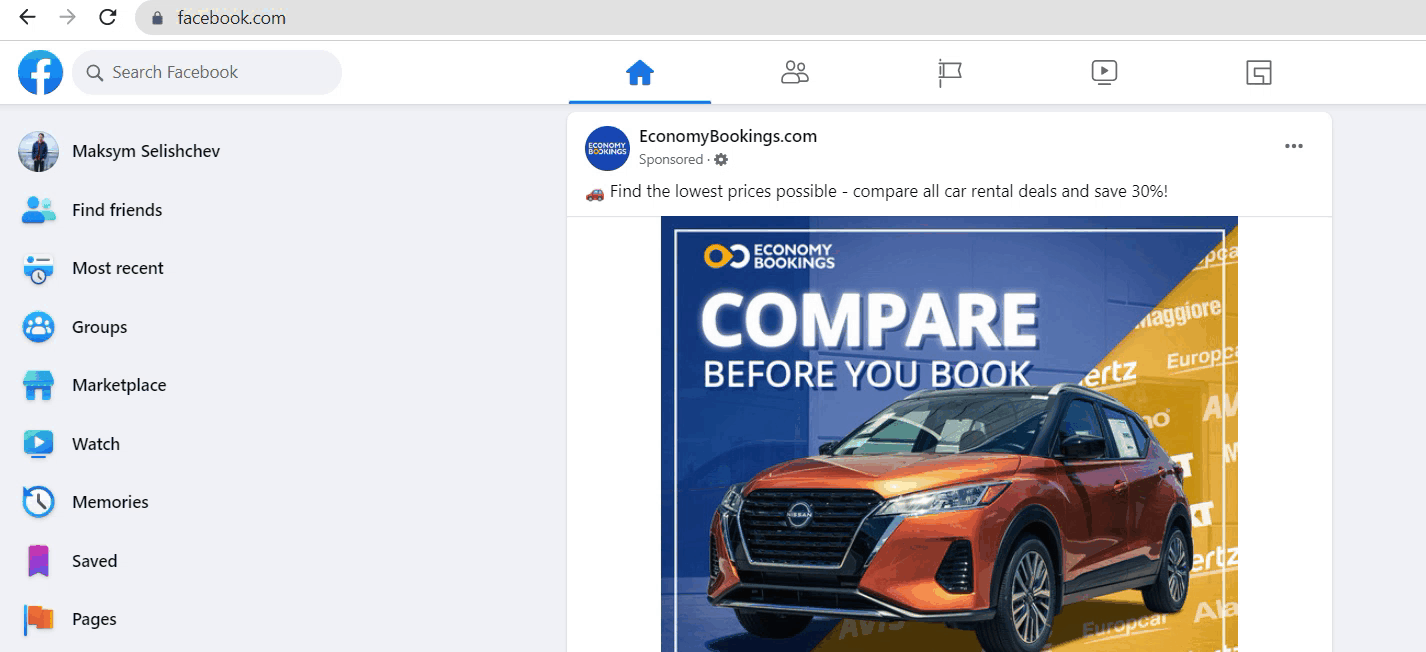
-
Email newsletter. Send emails of different forms and content. The tagged URL will tell you which one brought in more clicks. It allows you to modify the call-to-action button, text and subject line to better effect.
-
Banner ads. UTM tags will help you understand if the cost of banner placement pays off, how much traffic they bring and which of the banners are attractive.
How to create UTM tags
There are free link builders for easy handling of UTM tags, which will build the desired URL on their own - all you need to do is to set the parameters. One such service is Campaign URL Builder from Google Analytics Demos & Tools.
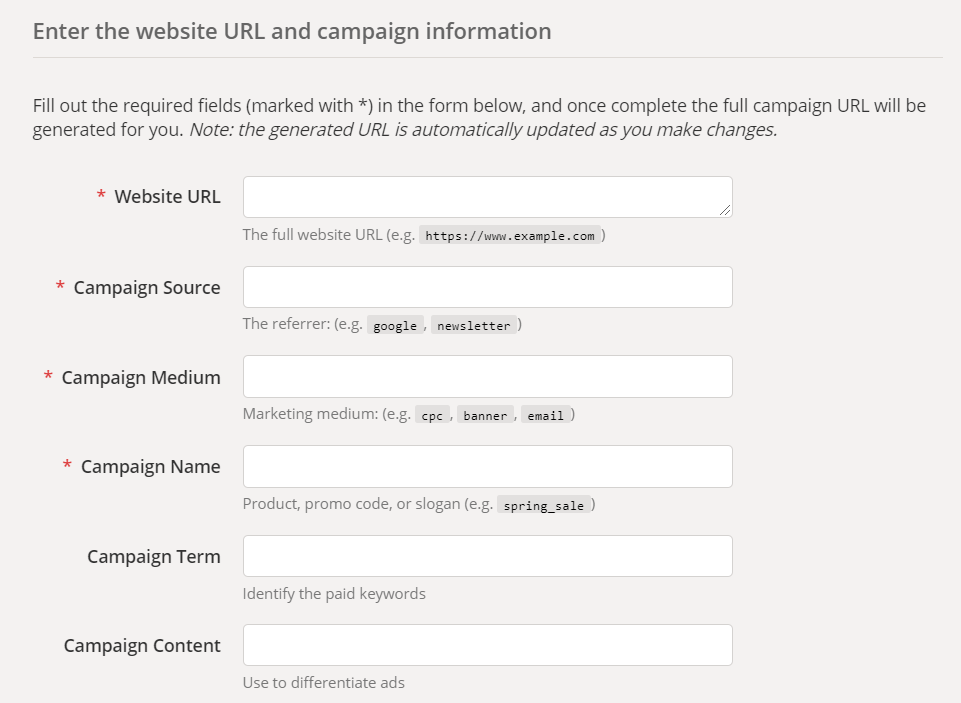
Mandatory fields are marked with an asterisk, including the site address and three parameters. There are also two optional parameters that you can fill in as needed. There are tips and descriptions for each parameter on the page for convenience. When you fill out the fields, a URL is immediately generated under the form, ready to use.
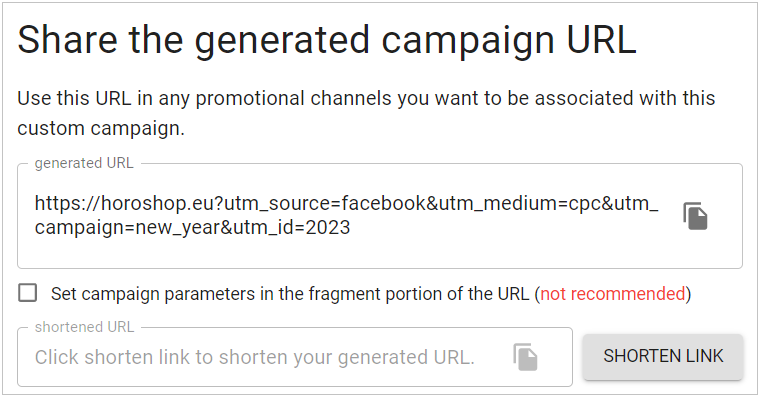
Processing of collected data
The data collecting the tags go into analytics services. Use Google Analytics to study the sources of traffic on the site. To do this, select "Traffic Sources" → "All Traffic" → "Source/Channel" from the menu. There you will find information collected by utm_source and utm_medium parameters. For information on other parameters, go to "Traffic Sources" → "Campaigns" → "All campaigns". You will find the desired campaign by the identifier, written in the parameter utm_content.
Conclusions
-
With UTM tags, you can collect information about the source of traffic, keywords that led to the ad display, and other indicators.
-
Dynamic tags allow you to collect in-depth information, such as information about the devices from which a user came to the site.
-
For advertising campaigns, UTM tags must be included in all links placed on external sites.
-
Use the URL link builder to create UTM tags.
-
Analyze the collected data using Google Analytics.



